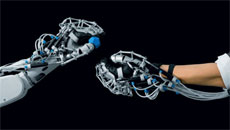Diamonds are not just a woman's best friend, they also have some awesome heat-handling capability - making it an ideal material to improve the quality of high-powered laser beams.
“Diamonds have a massive potential to make lasers travel much further and improve the beam quality, or more importantly the beam brightness, which allows you to focus the power of the laser beam onto a small target,” explained Aaron McKay of Macquarie University in Australia.
To change a poor quality laser beam into a high-quality one you need to use a laser converter.
But in conventional systems this always leads to a loss of power and the production of a lot of unwanted heat.
Using diamond, the team found that after conversion, the quality - or brightness - of the output beam was 50 percent higher than the input beam.
"Our work has demonstrated a diamond-based converter for enabling beam brightness enhancement for the first time," McKay noted.
Conventional conversion techniques are electronically and optically complicated, while the heat produced causes more problems than it solves, including affecting the quality of the laser beam.
The new technique uses a diamond measuring just millimeters in length, meaning conversion can take place using a much smaller device, increasing portability.
The beam conversion occurs using a process known as Raman scattering, which not only improves the quality of the beam, but also converts its colour or wavelength.
The findings appeared in the journal Laser & Photonics Reviews.


